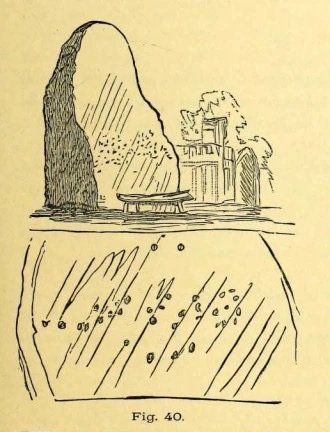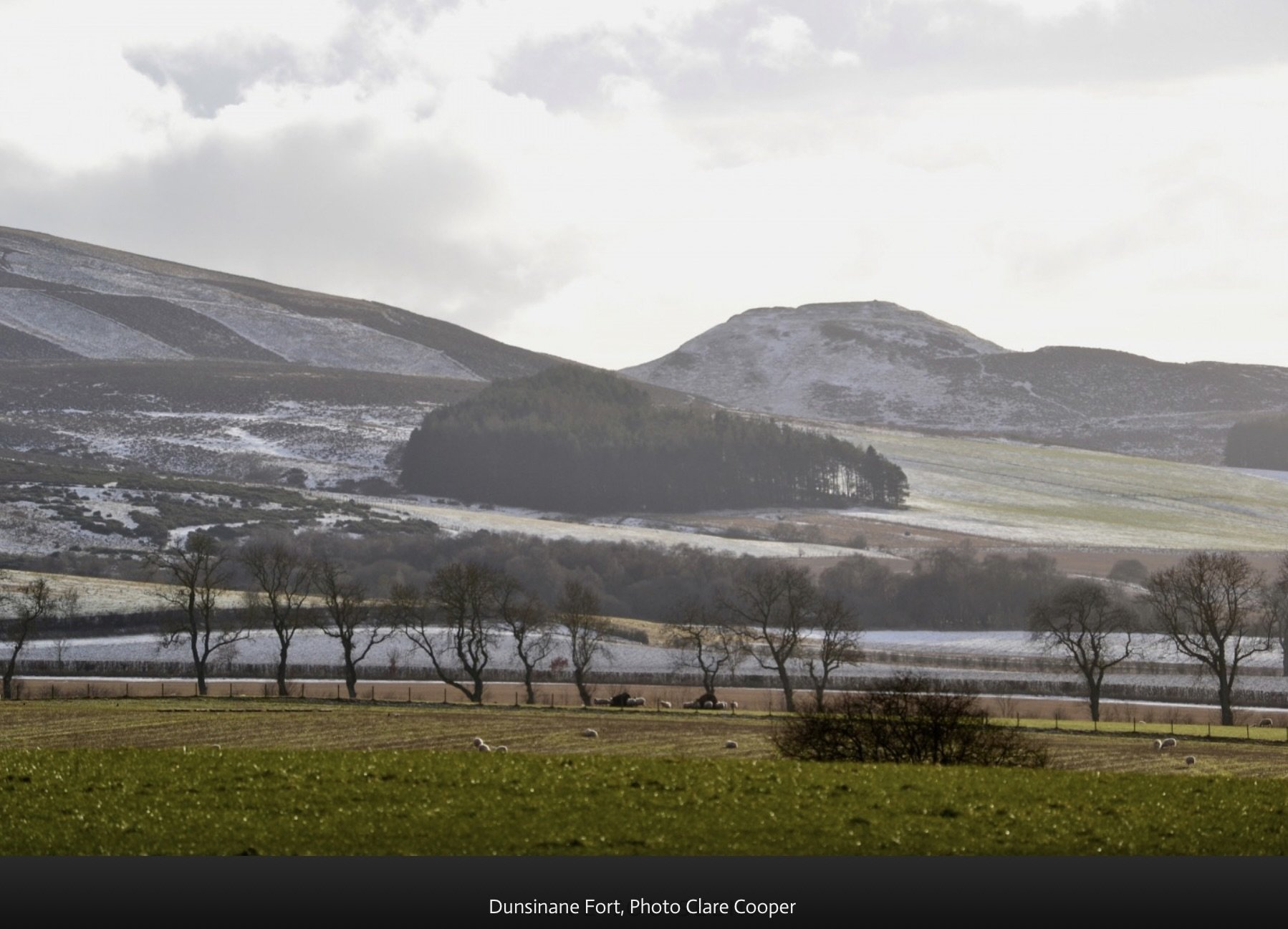Macbeth’s Stone
Macbeth’s Stone near Meigle, Perthshire
Photo by Clare Cooper
Just off the road between Ardler and Meigle in the grounds of Belmont Castle is the famous standing stone known as Macbeth’s Stone. It’s 12’ high and dates from about 3000 years ago. From a certain angle it looks as though a man’s head is carved on it.
My great great great grandfather William Clark c. 1813 worked as a gardener at Belmont Castle and probably passed it many times and heard the folk lore associated with it. Belmont woods was known to be a gathering place for witches.
It’s one of several ancient stones in the Meigle area and is noted for a band of about 70 “cup” marks around it, forming a kind of belt. (They’re hard to see in the photo.)
This dates it to the late Neothilic Age or Bronze Age - there are many examples of cup and ring marked stones across Europe. This stone just has cups - round depressions carved into the face of the stone. Other stones have rings around the cup.
No-one knows what cups and rings signified although there are many theories. Some archeologists think the Macbeth’s Stone cups show the constellation of Perseus. It faces the southeast so may have had a religious purpose.
Drawing by Thomas Wise 1884
Being tall and noble, the stone got named at some point - it’s also known as Siward’s Stone. The site is supposedly near where the Battle of Dunsinane took place in 1054. Siward, King of Northumberland, challenged the Scottish king Macbeth and tried to restore Malcolm, grandson of Duncan (who was overthrown by Macbeth).
The first person to write about it was Thomas Pennant in 1776:
“In a field on the other side of the house is another monument to a hero of that day, to the memory of the brave young Seward, who fell, slain on the spot by MacBeth. A stupendous stone marks the place; twelve feet high above ground, and eighteen feet and a half in girth in the thickest place. The quantity below the surface of the Earth is only two feet eight inches; the weight. on accurate computation amounts to twenty tons; yet I have been assured that no stone of this species is to be found within twenty miles.”
He didn’t realize how old it really was.
A few miles west of Meigle is Dunsinane Hill, mentioned in Shakespeare’s play:
"Macbeth shall never vanquished be, until Great Birnam wood to high Dunsinane hill shall come against him." William Shakespeare, The Tragedy of Macbeth.
Dunsinane Fort, Strathmore
To read more about Macbeth’s Stone go to:
https://cateranecomuseum.co.uk
Or better still walk the Cateran Museum’s trails which pass many prehistoric sites in central Scotland. I am so mad at myself that I didn’t visit the stone when I was in Meigle recently. We didn’t know about it at the time or how close we were.



